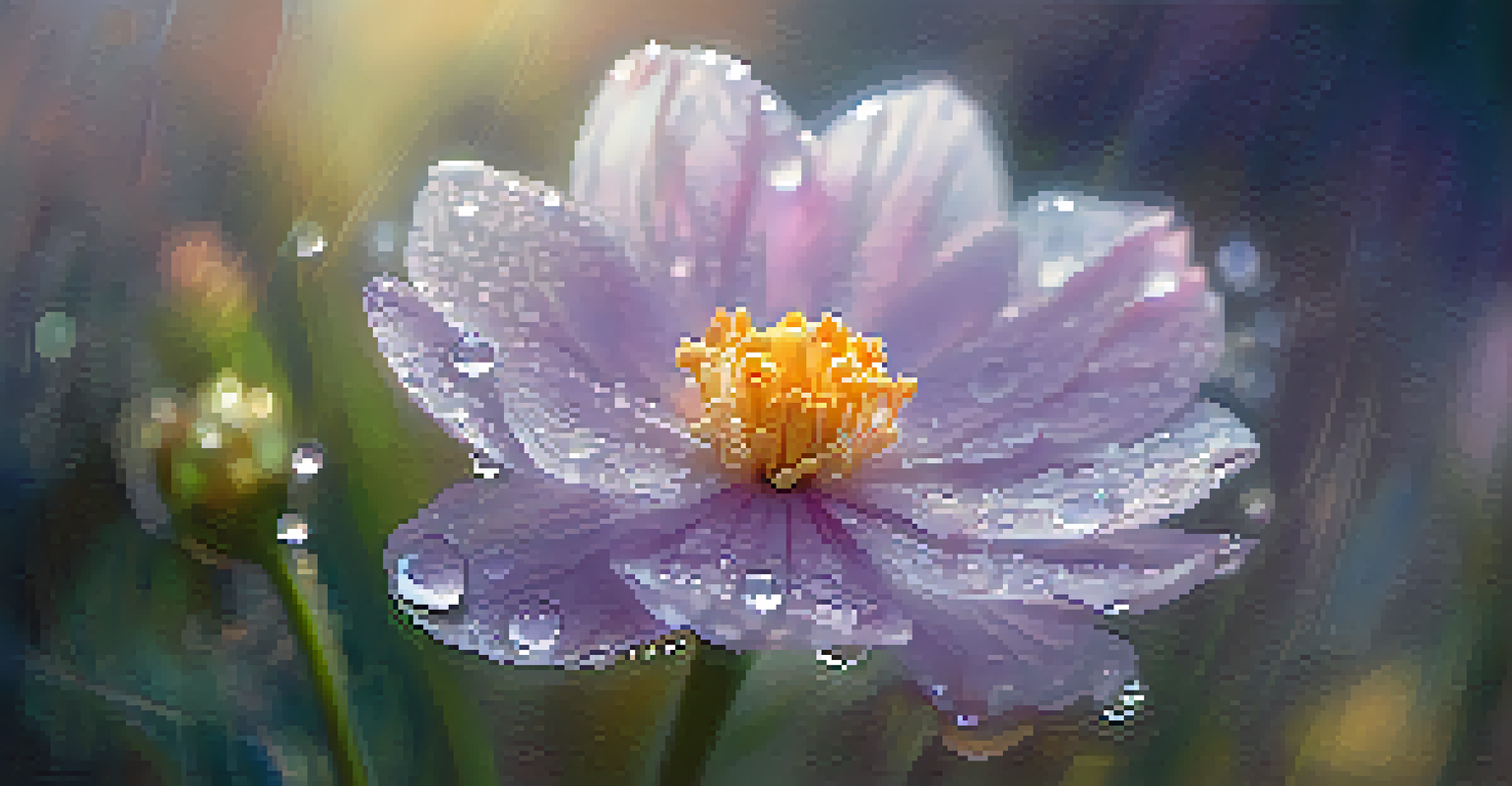The Concept of Beauty: Philosophical Views on Painting

Defining Beauty: A Philosophical Dilemma
Beauty has been a topic of debate among philosophers for centuries. From Plato's ideal forms to Kant's subjective experience, the definition of beauty remains elusive. This complexity invites us to consider how personal and cultural contexts shape our understanding of what is beautiful.
Beauty is in the eye of the beholder.
Philosophers often grapple with whether beauty is an inherent quality of the object or a projection of the observer's feelings. For instance, Plato believed in objective beauty, while modern thinkers like David Hume argued for a more subjective approach. This ongoing discussion highlights the fluid nature of beauty and how it can differ from one individual to another.
In the realm of painting, these philosophical ideas influence how we interpret artworks. Each viewer brings their own experiences and biases, leading to a rich tapestry of interpretations that can change over time, much like the evolving definitions of beauty itself.
The Role of Emotion in Artistic Beauty
Emotion plays a crucial role in our perception of beauty in paintings. Artists often infuse their work with feelings, inviting viewers to connect on a deeper level. This emotional resonance can transform a simple image into something profoundly beautiful, eliciting personal reflections and memories.

Take, for example, Edvard Munch's 'The Scream.' The raw emotion depicted in the figure's expression transcends its chaotic backdrop, evoking feelings of anxiety and existential dread. This powerful connection illustrates how emotions can enhance the beauty of a painting, making it relatable and impactful.
Beauty is Subjective and Evolving
The perception of beauty in art varies greatly between individuals and cultures, reflecting personal experiences and societal changes.
Thus, beauty in art is not solely about aesthetics; it's also about the emotional journey it offers. Viewers often find that their emotional responses can redefine their perception of beauty, emphasizing the subjective nature of our experiences with art.
Cultural Context: Beauty Through Diverse Lenses
Cultural background significantly influences our perception of beauty in paintings. Different societies have unique aesthetic values shaped by history, traditions, and collective experiences. This diversity leads to a rich variety of artistic expressions that reflect what beauty means in different contexts.
Art is not freedom from discipline, but disciplined freedom.
For instance, Japanese ink painting, with its emphasis on simplicity and nature, contrasts sharply with the vibrant colors and intricate details of Baroque art. Each style encapsulates the values and beliefs of its culture, illustrating how beauty is not a one-size-fits-all concept. This cultural lens encourages viewers to appreciate artworks beyond their immediate visual appeal.
Engaging with art from different cultures expands our understanding of beauty, inviting us to embrace a broader definition. It encourages dialogue and appreciation of diversity, reminding us that beauty can be found in the most unexpected places.
The Influence of Time on the Concept of Beauty
Beauty is not static; it evolves over time, influenced by societal changes and artistic movements. What was once deemed beautiful can shift dramatically as new ideas emerge. This temporal aspect of beauty is particularly evident in the history of painting, where evolving styles reflect cultural currents.
Consider the transition from the Renaissance's idealized forms to the emotive brushstrokes of Impressionism. Each era challenges previous definitions of beauty, showcasing how artistic innovation can redefine our perceptions. This fluidity encourages viewers to remain open to new interpretations and experiences.
Emotion Enhances Artistic Beauty
Emotional resonance in paintings transforms our understanding of beauty, inviting deeper personal connections and reflections.
As we reflect on the changing nature of beauty, we see that it mirrors our own growth as individuals and societies. The ongoing dialogue about what constitutes beauty in painting invites us to explore and question our values and preferences continually.
The Philosophical Debate: Objective vs. Subjective Beauty
The debate between objective and subjective beauty is central to philosophical discussions about art. Objective beauty suggests that certain qualities can universally be deemed beautiful, while subjective beauty emphasizes personal interpretation. This contrast raises important questions about how we evaluate paintings and their impact on us.
For example, some argue that symmetry and proportion are essential qualities of beauty, evident in classical artworks. Others contend that personal experiences and emotional responses must inform our understanding of beauty, as seen in contemporary art's varied expressions. This dichotomy encourages us to consider multiple viewpoints when assessing art.
Ultimately, this philosophical debate enriches our engagement with paintings. By acknowledging both objective and subjective aspects, we can appreciate the complexity of beauty and foster a more profound connection to the artworks we encounter.
The Role of Art Criticism in Defining Beauty
Art criticism plays a significant role in shaping our understanding of beauty in painting. Critics analyze artworks, offering insights that can guide audiences toward deeper interpretations. Their perspectives can influence public perception, highlighting aspects of beauty that viewers may not have initially recognized.
Consider the impact of renowned critics like John Ruskin or Clement Greenberg, who have shaped the discourse around beauty in art. Their evaluations can elevate certain works, prompting broader discussions about aesthetic values. This critical lens encourages viewers to engage more thoughtfully with paintings and their meanings.
Art Criticism Shapes Beauty Perception
Art critics influence public interpretations of beauty, guiding audiences to explore deeper meanings while acknowledging the subjectivity of their views.
However, it's essential to remember that art criticism is subjective, reflecting the critic's personal views. This subjectivity adds another layer to our understanding of beauty, reminding us that multiple interpretations can coexist, enriching our overall experience of art.
Conclusion: A Personal Journey Through Beauty in Painting
In conclusion, the concept of beauty in painting is a complex interplay of philosophical ideas, cultural influences, and personal experiences. Each viewer's journey through art is unique, shaped by their emotions, backgrounds, and the historical context of the works they encounter. This richness adds depth to our understanding of beauty, making it a dynamic and evolving concept.
As we explore various philosophical perspectives, we learn to appreciate the diversity of interpretations that paintings can evoke. This journey encourages us to question our assumptions about beauty and remain open to new experiences and ideas.

Ultimately, beauty in painting invites us to engage more deeply with art and reflect on our perceptions. By embracing this complexity, we enrich our appreciation of beauty, allowing it to inspire and challenge us in meaningful ways.